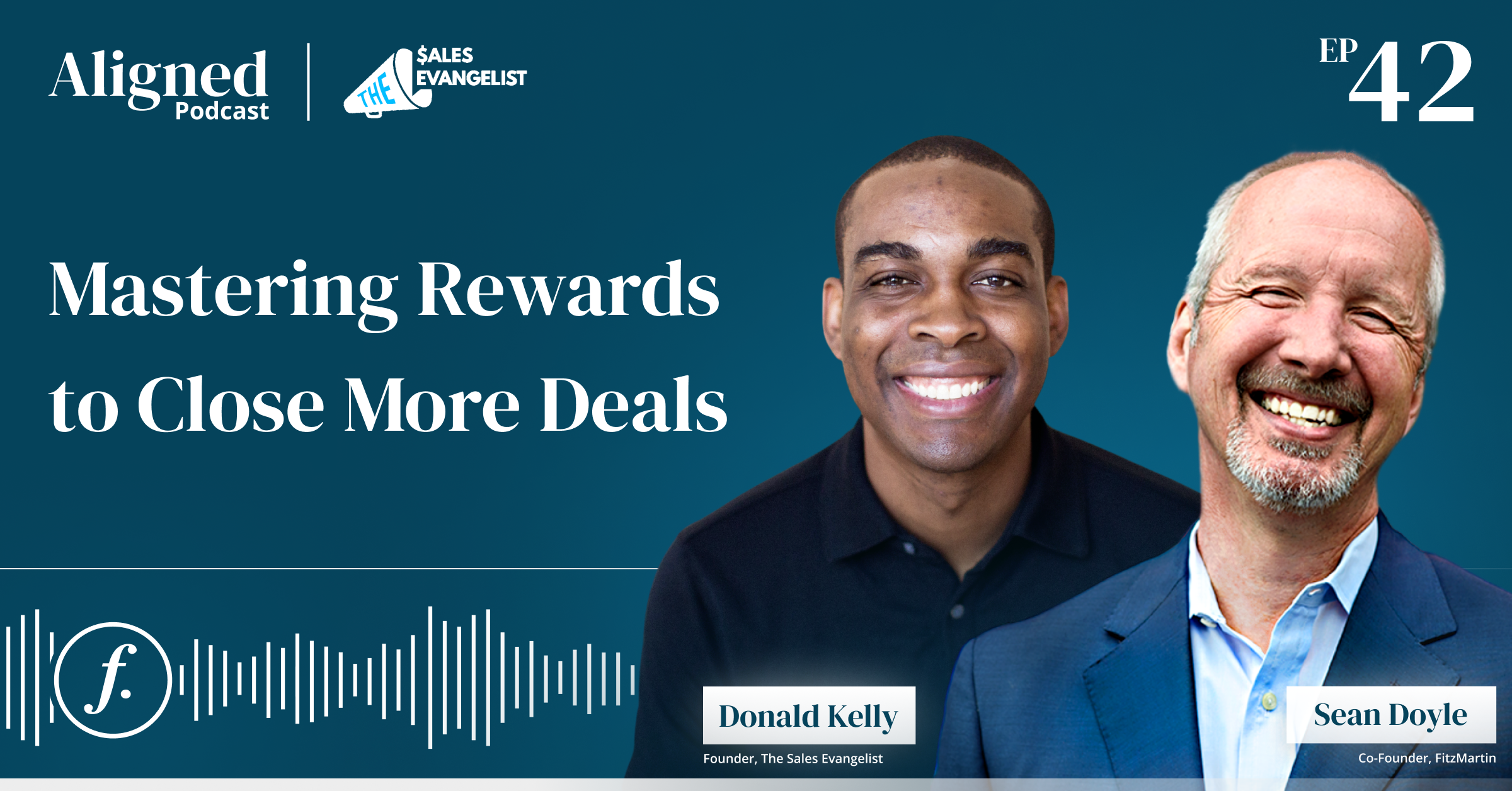Six Strategies to Help Sellers Win the Sale

From larger commission checks and an employee snack bar to free T-shirts and an extra vacation day, there are many ways sales leaders can incentivize employees to create more deals and work more efficiently. And unsurprisingly, some of those strategies are a lot better than others. While each tactic for increased performance has merit, rewards are among the most powerful (and utilized) solutions sales leaders integrate to reach new KPIs and drive more sales. Sales leaders can use rewards to instill lasting behavioral change that better suits the company by applying this same methodology to the sale itself by rewarding buyers throughout their sales journey.
Rewards and buyer incentives would fall under the behavioral change model of customer centricity—the focus of all decisions of all decisions related to services and experiences is to create consumer satisfaction and loyalty. By utilizing this behavioral model, sellers can determine key consumer insights and metrics beyond what might be typically associated with common or premature reward incentives. With consumer centricity, sellers inherently have a better understanding of the buyer’s journey because they emphasize the buyer’s relationship and interaction during each step. The model also improves operational efficiency and reduces barriers to procuring new customers because of the correlated increase in brand loyalty and customer satisfaction. While it’s excellent for the consumer to adopt this model, it is also good for the company itself because it supports a balanced dynamic between sales and marketing departments.
Utilizing rewards to drive behavioral change is a powerful way to adopt a customer-centric model. There are two fundamental approaches to rewards: positive and negative. Positive rewards are the traditional things we likely think of, like a monetary bonus, vacation holiday, or a free company water bottle—they add a positive stimulus to the individual. Conversely, negative incentives deal with removing an existing negative stimulus. For example, a negative reward would be removing a section of paperwork needed to close a deal, giving people the option to work from home, or removing obstacles to gain approval for the next stage of a transaction. While both rewards are powerful, positive incentives are more widely used because they’re easier to implement and can be broadly applied to a large group of people. (You can always add a positive stimulus but can’t remove a negative one if it wasn’t there to begin with.)
Within the realm of rewards, there are subsections that can be best leveraged by different audiences: managing, contracting, and shaping. Some lend themselves more to employee rewards, while others are great for inspiring behavioral change in the consumer. Managing rewards encourages the consumer to be self-aware of their weaknesses, accept them, and prepare to overcome those weaknesses. This is done through positive affirmations, written kudos, or talking a prospect through a potential objection they know will be the best long-term strategy for their organization. It isn’t necessarily “managing” from a business standpoint, but it is managing the behaviors and emotions of an individual to help them make the most logical choice.
Contracting rewards is the notion that a signed agreement, no matter the size of the deal, connotes a finality that drives behavioral change. A typical example is signing an NDA, promising confidentiality to another party. However, this psychology can be applied more broadly. While the idea of contracting isn’t a traditional “reward,” it is a powerful tactic to supplement and improve consumer loyalty. By committing verbally or on paper to a small agreement, consumers and buyers are more likely to agree to more significant future deals. This beautifully illustrates the concept of our final reward: shaping. Shaping is molding consumer behavior with micro-wins throughout their buyer’s journey to make them more likely to agree to larger purchases in the future. A seller could start with a small deal to build loyalty and trust, and then use that loyalty and trust to make progressively larger purchases over time.
Are all these types of rewards? Yes, but not in the traditional sense of a tangible gift. Instead, these psychological rewards make moving through the buyer’s journey a more straightforward process for the buyer. By removing obstacles that typically obstruct a buyer from purchasing, contracting and shaping can be considered negative rewards that remove negative stimuli from the consumer journey. While managing can fall under either category, that is typically considered a positive reward because of the additional verbiage and communication fundamental to the tactic. The concept of reward-driven behavior can be established and integrated into the buyer and seller process, and it can be a fruitful method to increase sales. Especially by implementing reward behaviors that aren’t associated with purchasing gifts or prizes, rewards-driven behavior can be instrumental in increasing sales while maintaining a low implementation cost.